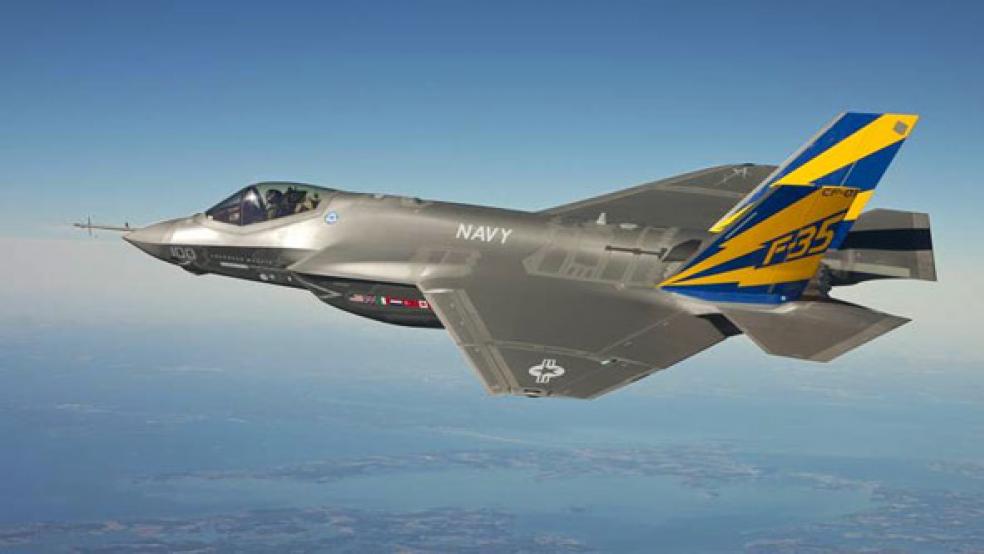When you think of writing software code, you think of companies like Apple, Google and Facebook. But every new car we drive, every GPS system we use—almost everything with a plug or battery, with the possible exception of your desk lamp—is engineered with software.

Software also enables modern aircraft, including the Pentagon’s fighter jets. Last week, we learned that the controversial F-35 Joint Strike Fighter program—a $397 billion dollar commitment and counting—has once again been sidelined. This time because of a delay in the highly complex software system.
Air Force Lt. General Christopher Bogdan told the Senate Armed Services Committee’s panel on tactical air and land forces that he is worried about the next installment of F-35 software. “I see more risk to the delivery of Block 3F, our full war-fighting capability, by 2017.”
In a report on April 25th, NextGov noted, “The F-35 is one of the most software intensive projects in the Pentagon’s history, requiring 9.5 million lines of code. In January, J. Michael Gilmore, the Pentagon’s director of operational test and evaluation, submitted a report to Congress that said there has been virtually no progress in the development, integration and laboratory testing of software for production versions of the aircraft.”
This is not the first time the F-35 has been derailed. In February, the Pentagon suspended all 51 F-35 test aircraft after a routine inspection revealed a crack in the jet engine built by Pratt & Whitney.
The F-35 is the most expensive weapons system the Pentagon has ever commissioned, and is considered one of its biggest failures. The real price tag for the F-35 is a whopping $1.5 trillion, according to Fiscal Times national correspondent, David Francis. That’s the cost of operating the air craft for 55 years, an amount that has been consistently increased as the program drags on.
PROBLEMS FROM THE START
The Pentagon commissioned the F-35 during the Clinton presidency. Lockheed Martin was chosen as the manufacturer.
Right now, each branch of the military has their own planes, meaning that numerous contracts existed with different contractors. Lockheed was expected to lower the cost of air defense by creating redundancies between the branches. It was ordered to produce three different versions of the F-35: the Marine version could take off and land vertically; the Navy version would be designed to take off from air craft carriers; and the Air Force version would take off from traditional runways. The Pentagon ordered nearly 2,500 planes for $382 billion, or fifty percent more than the original cost.
As the price soared, the Pentagon in 2010 deemed the program “too big to fail.” Yet it continues to fall short. Recent engine troubles are just the latest in a series of mechanical failures. A pilot was killed when oxygen to the cabin was cut off. The aircraft are running too hot, limiting their ability to operate in warm environments.
The original delivery date was supposed to be 2010. Then it was delayed until 2012. Now, it’s not expected to be in service until 2019.




